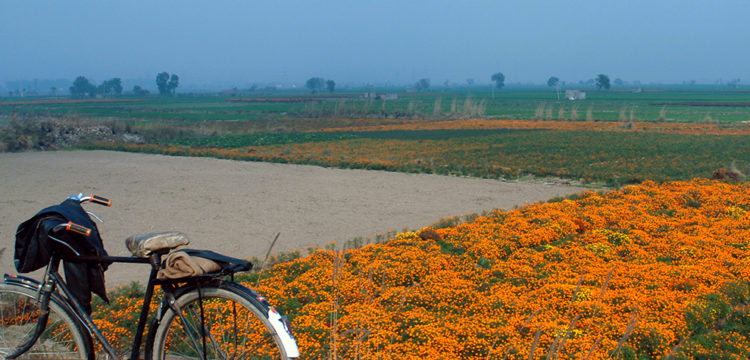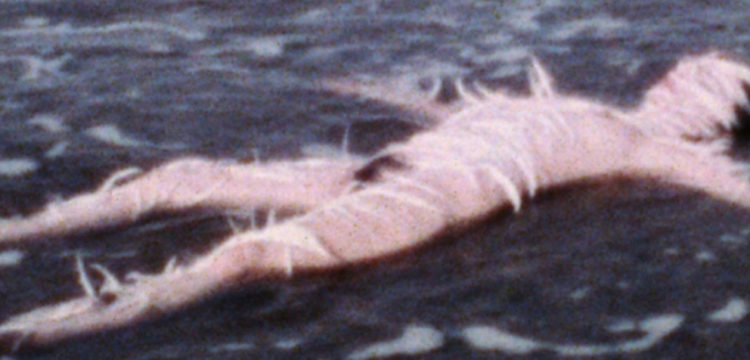Collecting Evolution
The artist and the agronomist on storing, hoarding, safeguarding and sharing agricultural and cultural heritage
In her first solo exhibition in Italy, artist Jumana Manna continues her interest in systems of conservation and the politics of preservation practices, by tracing parallels between scientific and cultural environments. Curated by Emanuele Guidi, Cache (Insurance Policy) (2018–2019) is an installation of existing and newly commissioned clay sculptures arranged throughout the space of ar/ge kunst. As the term “cache” suggests, this work explores the acts of storing, hoarding and safeguarding both natural resources and cultural artefacts for survival, patrimony and economic benefit.
Jumana Manna’s work in film and sculpture explores how power is articulated through relationships, often focusing on the body and materiality in relation to narratives of nationalism and histories of place. Here, Manna and the agronomist Salvatore Ceccarelli discuss the sharing of agricultural heritage and the safeguarding of the earth’s vital resources as well as the cultural importance of groups that are tasked with managing and securing the biological diversity of their respective localities. The conversation is an excerpt from the publication A Small Big Thing (Sternberg Press, 2018), that accompanied the first solo museum presentation of the artist in the Nordic region, at Henie Onstad Kunstsenter, and traces her distinctive work.
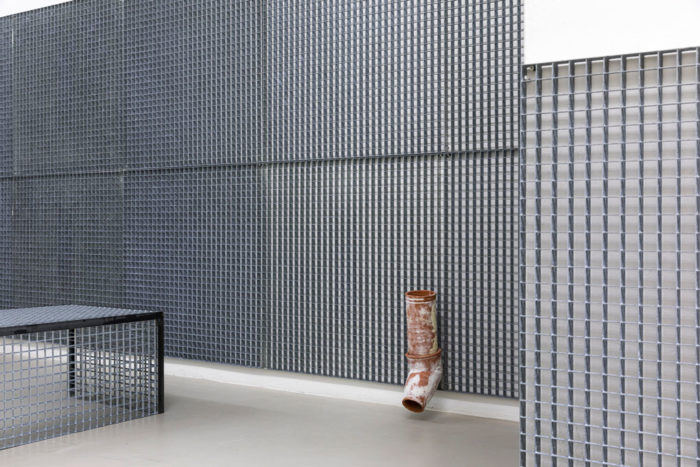
Jumana Manna, CACHE (Insurance Policy), exhibition view, photo Luca Guadagnini ©ar/ge kunst
4/5/2017. Email. Berlin, Germany.
Dear Salvatore,
I hope this reaches you well.
My name in Jumana Manna. I am a Palestinian artist working on a documentary on the politics of seed preservation and agricultural research in Syria and Lebanon. The premise of the film is the reconstruction of ICARDA (International Center for Agricultural Research in the Dry Areas)’s Aleppo-based gene bank via the Svalbard Global Seed Vault in Norway; the many contradictions of this effort is at the heart of my project. After coming across your name and reading some of your articles, I was eager to get in touch.
I was wondering if you would be open to speaking to me, over the phone or Skype. I would be most grateful to hear your insights based on your research and long-term experience with ICARDA and agriculture in Syria at large. What I am trying to understand is the impact of the CGIAR (Consultative Group on International Agricultural Research) on the landscape of our region and on the fate of smallholder farmers.
I am based in Berlin, but travel frequently to Lebanon. I am not sure where you live at the moment, but if our paths cannot cross easily in person, I really hope to get the chance to talk through other means.
I am at your disposal should you like to know any further details about me or the project.
Thank you in advance, and kind regards,
Jumana
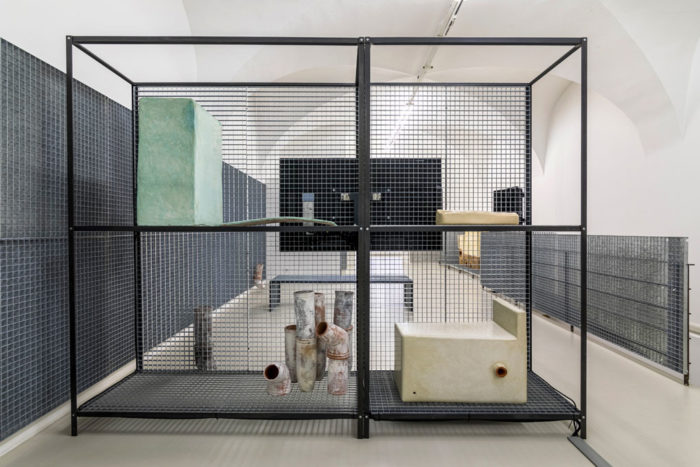
Jumana Manna, CACHE (Insurance Policy), exhibition view, photo Luca Guadagnini ©ar/ge kunst
4/5/2017. Email. Ascoli Piceno, Italy.
Dear Jumana,
I live in Italy now, though am still very often on the road. I will be very happy to talk to you on Skype about, particularly, this very strange and contradictory news about ICARDA’s gene bank.
I have a very busy schedule but for example the 18th of April could be one of the first suitable dates if it is not too far away for you
Best regards,
Salvatore
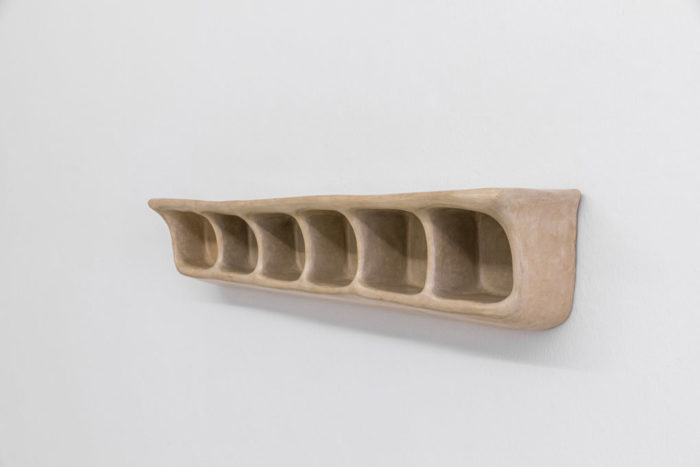
Jumana Manna, CACHE (Insurance Policy), exhibition view, photo Luca Guadagnini ©ar/ge kunst
4/18/2017. Skype. Beirut, Lebanon, and Ascoli Piceno, Italy.
Jumana Manna: Perhaps we could start with your background and how you got involved with ICARDA.
Salvatore Ceccarelli: Well, I was a university professor at Università degli Studi di Perugia teaching genetics and plant breeding when I was told there was an opening at ICARDA in Aleppo as a forage breeder. So in April of 1980 I went for the interview. I was hired and followed by my wife and two young daughters. Until that point I was working mostly in a theoretical vacuum, both personally and professionally. The move was a very positive experience—I became acquainted with farming systems; I saw the difficult conditions in which farmers in Syria were operating, depending largely on erratic rainfall.
ICARDA was first established in Lebanon in 1976, but due to the Lebanese Civil War, it had to relocate and did so to Tel Hadya, south of Aleppo. After having a base there for nearly forty years, they had to move again due to the Syrian Revolution, which turned into war. Ironically, it moved back to Lebanon to the same research center it initially began from. Before going into the present, can you talk a bit about the decision to establish a base in Syria in the 1970s?
Well, yes, I still l believe that the move to Syria was a mistake. ICARDA should have been established in Jordan and not in Syria, mainly because in a relatively small distance Jordan offers all the diversity of climates that you find in Syria plus the environment of the Jordan Valley, which is missing from Syria. But Bashar al-Assad’s father (Hafez al-Assad) was very clever. He was the first in the region to offer a semi-diplomatic status to the staff, and to offer a campus of a thousand hectares, which was actually confiscated from the farmers without paying them.
I thought the lands of Tel Hadya were rented from the farmers for ninety-nine years. Is this inaccurate?
I am not sure. The news that I heard was that the farmers—I think it was around the 1990s—made a very violent protest with several casualties. It was a rough week because what we were told was that they were never paid. But this was only one episode in the thirty years I spent in Syria.
I have been curious about Hafez al-Assad’s, or the Syrian regime’s, offer to host ICARDA. I do not know if it was known at the time, but the CGIAR—this network of research centers established across developing countries with the aim of improving particular sets of crops in each region—was a primarily American-driven, capitalist endeavor funded by donors such as the Ford and Rockefeller Foundations.
It is not that clear, but considering that the CGIAR developed as a consequence of the so-called success of the Green Revolution—which is basically at the base of most of the problems modern agriculture is causing to the planet—yes, it was built to export the American model of agriculture. This is partly the reason why my work on participatory plant breeding (PPB) was always seen with great suspicion.
I see. But as the CGIAR is based on an American model of agriculture, it seemingly contradicts Hafez al-Assad’s narrative of leading a socialist country representing peasant classes and so forth—at least on the surface.
These aspects of CGIAR are very well masked. If you look at the original statement about the mission and the vision, it is all about poor, small farmers and improving livelihoods and gender equality. One of Hafez al-Assad’s first actions when he came to power in 1970 was the agrarian reform by which big properties were cut into pieces and land was distributed to landless peasant families. So there were quite a lot of relatively small farmers.
Do you think Hafez al-Assad then agreed with the underlying motivations of the Rockefeller Foundation? It fit more or less with his vision?
I think that he was happy with the vision and the mission. But whenever there was political tension, like the 1982 killing of the Muslim Brotherhood in Hama, the invasion of Lebanon, or the Gulf War, on all these occasions there were helicopters circling over Tel Hadya. When the revolution started in Syria’s southern province, in February and March 2011, email and communication systems were put under control in a matter of days. So the Assad family knew we were sort of an outpost of a foreign country that was able to observe what was happening in that country. We knew we were, well, that we were always under control. We were always told not to engage in political discussions, even though this is one of the preferred conversations of participatory farmers. I observed that farmers’ houses were not bugged, so I felt relatively free, particularly when I started moving my research out of the headquarters and spending most of my time in farmers’ fields. That experience with farmers also allowed me to understand why, generally speaking, there is a lot of consensus for Bashar al-Assad. Over the thirty years I spent in Syria, I have seen the schooling system expand to the most remote areas, the quality of enrollment improve, and water and electricity reach remote areas. Farmers in Raqqa province who were digging water from a welling system got running water after 2000; they had been using generators, and then they got electricity. And for rural families, these are things that matter.
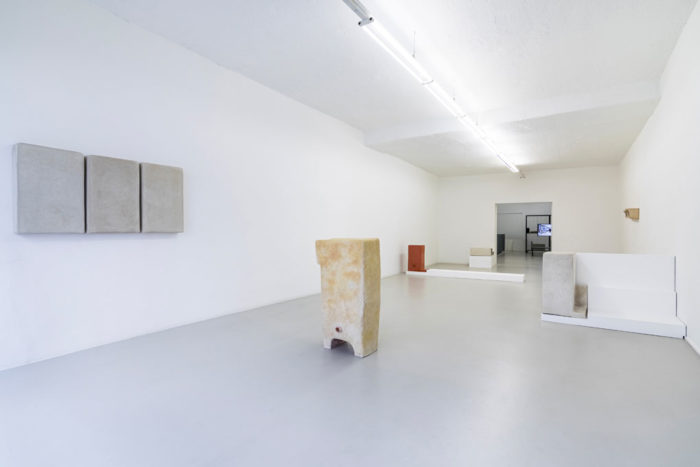
Jumana Manna, CACHE (Insurance Policy), exhibition view, photo Luca Guadagnini ©ar/ge kunst
Very much so. So, ICARDA was based in Syria, but in fact its mandate stretched across the dry areas. It was never specifically focused on Syria.
Well, it depended. In the case of barley, we had a global mandate, so I traveled to Latin America, China, India, wherever barley was grown. In the case of wheat, ICARDA was given the responsibility of research in the Middle East and North Africa. This created conflict with CIMMYT (International Maize and Wheat Improvement Center), based in Mexico. Brainwashed by the Green Revolution, they opposed the establishment of ICARDA, claiming that they were capable of doing wheat research from Mexico for all over the world.
But why would they care? Would this mean funding cuts for them?
Yes. The establishment of ICARDA reduced the geographical responsibilities of CIMMYT. They did not like it.
And within the CGIAR, would you say there are great differences between the institutions?
Yes, for example, CIAT (International Center for Tropical Agriculture) in Colombia was the first center to start participatory research, working with small farmers up and down the Andes. But of course other centers were even worse than ICARDA for their top-down attitude toward farmers. With IRRI (International Rice Research Institute) in the Philippines and ICRISAT (International Crops Research Institute for the Semi-Arid Tropics) in India, there was very, very little research done in real farming conditions. Everything was done in the station, in more or less optimum conditions.
Are all the centers focused on the commercial benefit of agriculture rather than subsistence farming, or do some of the public centers offer a different economic model, one that doesn’t look at agriculture as commodity production?
This is one of the things that changed over time. I think the philosophy was that subsistence farming had to stop somewhere. You cannot do research just to make life for a subsistence farmer better, because the model was the model of commercial farming, market oriented. This became the keyword of every project: market oriented.
At the time, in the early 1980s, did you believe that market-oriented farming was the only way forward? Was there really no alternative?
I fully endorsed the vision of working for small farmers, alleviating poverty, making sure a vision of gender equality is always embedded in the research project. I mean, for me, the change in the vision of the CGIAR has been a big disappointment. If I tell you the latest developments in the last, say, less than ten years, you’d be horrified to hear that now the centers are basically in partnership with Syngenta, Monsanto, Pioneer, and so on.
Yes, I am aware of that. I heard that the CGIAR lost a lot of core funding over the past two decades, and is therefore growing dependent on corporate funding. But what’s not clear to me is if it has been sharing its seed collections with these multinationals.
Well, look—this is not going to be a happy-ending story. Particularly in the last four years, I have seen the migration of former top managers from Pioneer, DuPont, and the Bill & Melinda Gates Foundation to top management positions at the CGIAR, and vice versa.
That is very telling.
There is this idea, which in my opinion does not make any sense, that since these private companies are so “successful,” public centers should partner with them. They do not consider that this so-called success is due to the corporation’s monopoly of the seed market. Obviously their varieties are going to be taken up, simply because farmers do not have any other choice. This is this contradiction between private and public breeders. In private plant breeding, you also control the seed market. If you take for example the US-developed GMOs (genetically modified organism) of maize and soybeans, which are the main “successes,” and you find out that Monsanto dominates the corn seed market in the US and DuPont controls the vast majority of the soybean seed market, then it’s obvious that the farmers are growing a lot of GMO soybean and corn because there is no other seed available. Whenever I give speeches in the US, I have farmers coming to me and saying, “When you go back to Syria, tell your farmers they have much more freedom than I do, because if I want to plant a non-GMO soybean, I cannot, because I cannot find the seed!” That is not success in biological terms; this is business success. Out of the fifteen CGIAR centers, eleven have gene banks, and those gene banks have in total about 700,000 seed samples of the most important food crops. Which is nearly one-third of all the accessions of all the gene banks in the world.
Yep, it’s major.
Once you have given the corporations access to your breeding program and you are entering into a partnership with a number of seed companies, how long until these corporations ask the centers to have access to the gene banks? And if this happens, how long will access to those gene banks remain public?
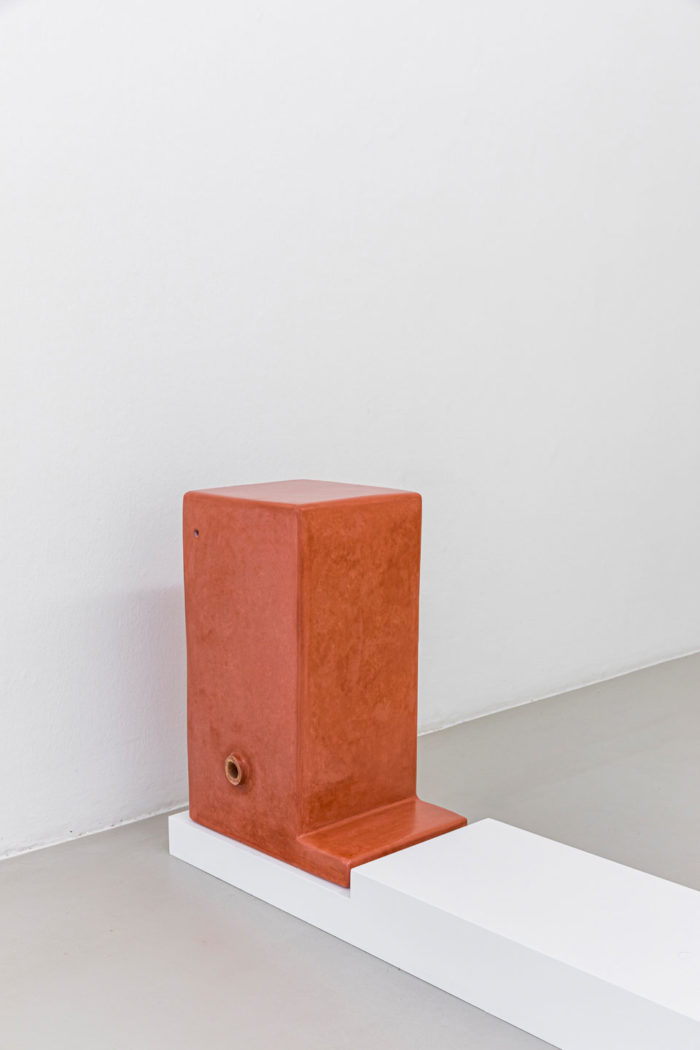
Jumana Manna, CACHE (Insurance Policy), exhibition view, photo Luca Guadagnini ©ar/ge kunst
When I asked ICARDA about these potential dangers of the private companies, I got two answers. One was: “These companies are already so much richer than us and they already have gene banks bigger than ours, so they don’t need ours.” And the other answer was: “We just get money from them, but they don’t impact our mandate.”
All of them are lies [laughs]. I do not think that anybody has the same rich collection of wild relatives of barley, wheat, lentil, and chickpea as ICARDA does. This is unique. In gene banks, you normally have two types of material: material that you collect and material that you get as a donation from other gene banks. For example, ICARDA had quite a bit of material from the USDA (United States Department of Agriculture) collection.
How old is the collection from the USDA?
I am not sure, but it was established long before ICARDA. When the center first established its gene bank, it began getting material from the USDA and another very famous center in former East Germany, called IPK Gatersleben (Leibniz Institute of Plant Genetics and Crop Plant Research). But then, once ICARDA established its own gene bank, it started making collection missions into farmers’ fields and the wild to make its own collections. These were unique, because of ICARDA’s unique position in the middle of the Fertile Crescent, where barley and wheat were domesticated. You can walk in the wild and still see them. So it’s not true that the corporations have all the material they need in their own gene banks.
But so far have Syngenta, Monsanto, or any of these companies taken any accessions from the CGIAR?
Probably not. And if they do, they will be very careful, because they know there will be a big boomerang effect. If they do it, they will do it in a very clever way, masked in many different activities through a research project.
Now talking about gene banks, particularly ICARDA’s: I asked the head of the center’s gene bank about the duplication of the collection, and he simply would not answer the question. I said, “Look, the gene banks of the CGIAR centers are receiving money from the Global Crop Diversity Trust based in Berlin for their operations, and one condition to receive that money is that the collection has to be duplicated, somewhere.” Svalbard is not considered to be a duplicate.
Why is the Svalbard Global Seed Vault’s collection not considered a duplicate?
Well, because it is a vault. In fact, Svalbard is not technically speaking a gene bank, but a vault. Only those who deposited the seed can take that seed out. This means that the material from ICARDA’s Aleppo gene bank, which nobody knows whether it is working or not working, is in another sister institution’s gene bank somewhere out there, and also in Svalbard. So if ICARDA wants to take material out, why did they go to Svalbard and not to Gatersleben, Morocco, Lebanon, the USDA, where the material was already duplicated? To get on the front page of the newspaper? To make good noise? They never answered that question.
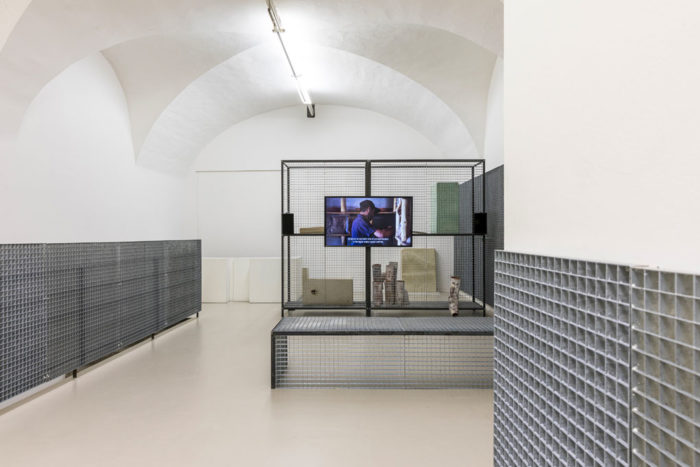
Jumana Manna, CACHE (Insurance Policy), exhibition view, photo Luca Guadagnini ©ar/ge kunst
I asked ICARDA that question. They’ve told me that the collection exists in full in Svalbard, while the second duplicate exists in a scattered form, in different gene banks, and is older, so potentially less viable. Therefore it was just easier and better to go to Svalbard.
This is correct, but so what? Given that the collection is scattered, you get a little bit from one, a little bit from another, you rejuvenate them, you start the activity again of distributing material, but without touching the safest of the collection. To me it is a criminal act, because it is actually putting in danger what I consider one of the most precious collections of the CGIAR.
Because the seeds are put in danger when withdrawn from the vault and shipped abroad?
Because Svalbard is the safest backup of the collection. It has 80 percent of ICARDA’s gene bank backed up. A single gene bank isn’t able to take up the entire collection of another. So, the duplication has to be dispersed.
But the 35,000 accessions ICARDA withdrew from Svalbard were not rejuvenated at the same time. They’re doing this in phases.
Yes, but until they have multiplied and rejuvenated, they are in danger. Every time a material gets out of a gene bank, it is in potential danger; if there is a storm or a major climatic event . . .
If there is a plane crash . . .
Yes, exactly. You never know. You do not touch Svalbard—this is my point.
What is your answer to why they withdrew backups from Svalbard and not elsewhere?
Because that is what they wanted to do. It is very difficult to understand whether it is simply a public relations operation. Perhaps they wanted this move to be an example of how useful Svalbard can be, through the case of Syria. You know, there was so much controversy about Svalbard. I was in Norway a couple years ago discussing the vault with someone from the Ministry of Agriculture in Norway, and they acknowledged that the entire presentation of Svalbard was probably not correct, resulting in the false impression that anybody can go and pick up materials from it. Some of the public assumed that since the vault was partially funded by private bodies, those individuals or companies would have access to the materials inside it. “We never made it clear that Svalbard is not a bank,” she said. That only the depositors and vault management know what’s been deposited. We never made that clear enough. Because of that controversy, they probably thought, “OK, now that we have the case of Syria, where it is not possible to get access to the gene bank, let’s make sure we get enough media coverage.”
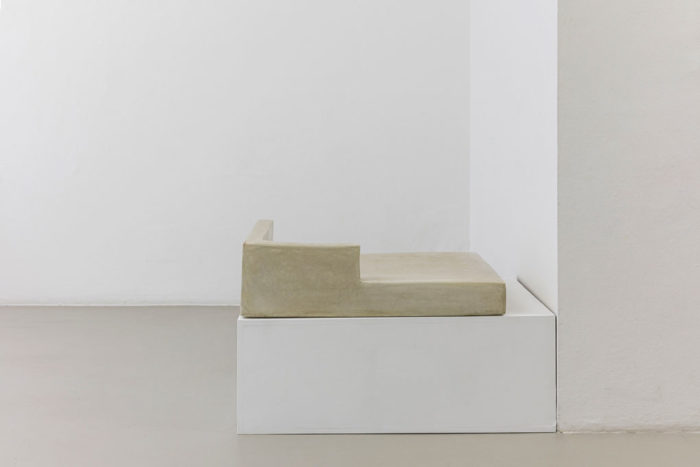
Jumana Manna, CACHE (Insurance Policy), exhibition view, photo Luca Guadagnini ©ar/ge kunst
I have wondered a lot about this suspicion of the vault being beneficial for multinational seed corporations in the long term. Do you think the Svalbard Global Seed Vault was a good idea to begin with?
Well, yes, given that there is so much scientific evidence that the crops in the wild are evolving very, very rapidly. From this point of view, I would prefer that the gene banks do as much rejuvenation as possible, both by keeping material safely duplicated in the gene bank, but also by keeping it out in the field. In other words, to every year go out, collect a sample, and then put it back in the gene bank, so that with this situation of rapid climate change you can actually conserve while allowing the continuation of evolutionary processes. What about starting an activity that can be defined as collecting and saving evolution? You let the crops evolve, and as they evolve, you conserve them. So you don’t keep them frozen for fifty years and then take them out, because when you do, that material is . . . well, it’s always better than nothing if a major disaster happens. But it may be just a little bit better than nothing [laughs].
Critics say that the millions spent on initiatives like the Global Seed Vault could be used instead for farmer-led grassroots movements that are conserving these seeds in the field, keeping them alive in the earth, “in situ,” rather than locking life out in frozen bunkers. This would both allow the seeds to continue evolving and empower the farmers planting them.
Yes—I do not understand why the CGIAR does not keep all its collection in the field as well. It’s like how some people like to collect stamps, and after a few years, those stamps are good for nothing. You cannot put them on a letter and pretend the post office will accept it. Some of these accessions may actually be more or less the same if they are left only in the gene banks.
That’s a good metaphor! OK, so you don’t know if the CGIAR facilitates access of its gene banks to private companies?
I do not have evidence that this is happening. But I would also add that I am not expecting that, if this is done, it is done openly.
I do not quite understand the purpose of the Seed Vault. If you constantly need to rejuvenate the collection to make sure the seeds are adapted to the changing climate, does that mean you annually have to send the black boxes to the vault?
Not necessarily. With rejuvenation, there is usually a substitution. You take out the old seed and replace it with the new seed. So you are not multiplying the number of samples. If you withdraw ten samples and plant them, you collect new seeds and put back ten new seeds; you will not have twenty.
Right, I understand. But you will have a new generation.
I do not know if there is a policy to add a new seed sample of the same accession into Svalbard every twenty years. Anyways, Svalbard is currently underutilized. It can hold 4.5 million samples and it has less than 900,000 at the moment. So considering that all the collections in the world add up to 2.7 million, in theory Svalbard could hold two copies of almost every sample available in the world today. Perhaps their 4.5 million capacity can be explained by the fact it takes into account that the centers will put in a new set of materials in ten years. Only gene banks with extremely cold temperatures can guarantee long-term conservation; I am talking about fifteen to twenty years.
That’s it?
That is why the gene bank needs to continue rejuvenation.
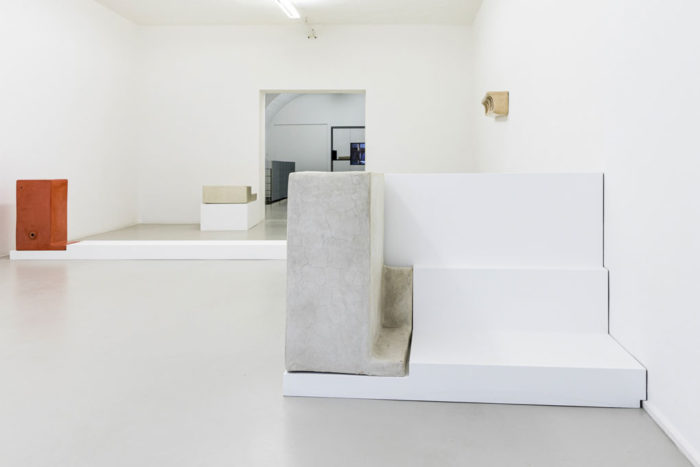
Jumana Manna, CACHE (Insurance Policy), exhibition view, photo Luca Guadagnini ©ar/ge kunst
Let’s say there was an ethnobotanist who made a seed collection in 1920 and we tried to plant this collection today—is it most likely not going to have any viable seeds?
It depends on the crops. There are a number of crops, one of which for example is tobacco, where the seeds contain fat that deteriorates rapidly with time. For this species, it is next to impossible to conserve seeds, and the only way to maintain them is to conserve DNA. But if you keep cereals and legumes under very low temperatures and very low humidity, they can stay viable for many years. I doubt that a collection from 1920 would hold, but it all depends. I know farmers who used to store seed underground and they were reasonably successful. Once, in Tunisia, there was a drought, a crop loss, and they thought that the very old varieties disappeared, but then they popped up again. We found that the women in the villages actually kept the seed in jars underground. So on that occasion when they came out, they were viable. But I don’t think anybody usually keeps seed for more than ten years assuming it will germinate.
That is amazing. I am very interested in jars and vases. But let’s go back a bit and talk more about Syria. I am curious to hear your thoughts on the relationship between ICARDA and the Assad regime. I understand that the seed market was fully controlled by the regime.
I can tell you my personal experience. When I started PPB (participatory plant breeding) in 1995, I had quite a lot of confrontation with the Ministry of Agriculture. They didn’t like my idea. They thought that I would bring new diseases to farmers’ fields. They were totally brainwashed by the ideas of the Green Revolution: uniform crop, official registration, seed certification, etc. It so happened that in 2003, there came a new minister who was enthusiastic about my participatory program and said, “Well, look, we need to make this a program of the ministry.” He gave full support, which meant access to the staff and facilities of every single research station in every province of Syria. So from the eleven villages I began with, eventually I was working in twenty-four villages in seven provinces—Hasakah, Raqqa, Aleppo, Idlib, Hama, Daraa, and Suwayda. It lasted five magic years, until, in 2007, we had a workshop with about two hundred farmers to celebrate the end of one of the projects supporting this work. During that workshop, farmers mentioned that in addition to the benefit derived from these high-yielding varieties coming from the participatory program, many of which they reproduced by themselves, they were also benefiting from selling seed to the rest of their neighborhoods. The ministry became furious. A week later, Mahmoud El-Solh (then director of ICARDA) received a letter from the Syrian Minister of Agriculture saying that the work I was doing was a threat to national food security.
Because the farmers were selling the seeds?
Selling seeds that were not officially registered to their neighbors.
Which must threaten those who believe in the Green Revolution and a centralized seed system.
Oh yes. Well, now, everyone agrees that at that particular moment in history, the Green Revolution was probably the right thing to do. But then one must also recognize all the negative spillovers. One negative spillover we are now realizing is psychological. Today, a lot of Indian scientists are still working under the illusion of a second Green Revolution. They don’t even understand that farmers in the Punjab have been backed into a corner, and they don’t know how to get out of a situation of stagnant yield, water that you cannot drink, soil that has completely lost its fertility.
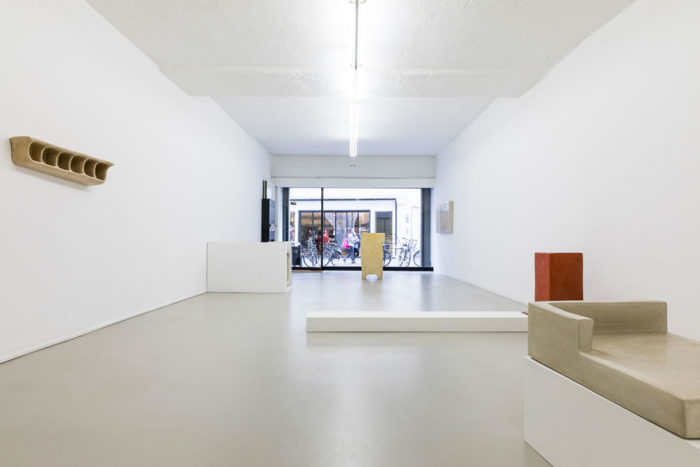
Jumana Manna, CACHE (Insurance Policy), exhibition view, photo Luca Guadagnini ©ar/ge kunst
But why are you saying that in that particular moment, in the 1970s, the spread of high-yielding varieties, chemical inputs, and irrigation techniques was the right thing to do?
There was a serious threat of famine in India. So there was a strong pressure to produce something that could up production. But this was done using one of the most important resources of the country: water. And now, if there is a poor monsoon season, India is in deep trouble, because they don’t know how to grow a crop without water; they’ve lost the knowledge. I go to remote villages in Iran and ask farmers, “Didn’t you ever try growing a wheat crop with less fertilizer?” They look at me as if I come from the moon. There has been such widespread brainwashing that intensification is the only way you can practice agriculture. From this point of view, what I was doing was exactly the opposite of the Green Revolution. One of the major differences between participatory and conventional plant breeding is that with participatory breeding, you develop almost as many varieties as villages. You basically adapt the crops to the environments and users, rather than changing the environment to let the crop express its full potential.
You work with nature, rather than against it.
In Syria, there was a conflict between farmers and the Ministry of Agriculture. Particularly after I started PPB, farmers were asking, “Why hasn’t the ministry adopted what you do? Don’t they see that this is what we need?”
And what was the reason the Syrian regime was not interested in registering more varieties? Was it just to be able to control the population more?
Exactly. I remember one day a scientist asked me, “You’re not afraid of losing control?” If you want to make ministry officials nervous, you just say the word “seed.” Their attitude was that everything that has to do with seed must be under the control of the ministry. And again, this amounted to ignoring reality: in the case of barley in Syria, 90 percent of the seed planted every year was seed that farmers kept from the previous harvest. Only 10 percent was certified seed.
Wow, really, so much?
So you see the potential of the participatory program, because it was feeding new varieties to that 90 percent.
Are you in touch with some of these farmers? Do you know if they’re still planting the varieties?
No, I completely lost touch. I’m waiting until the situation is better so I can go back. There was one farmer—he farmed in Ebla. Do you know this archaeological site south of Aleppo?
Oh yes, I recently read about the ancient clay tablets excavated in Ebla that indicated it was a major trading center for the Fertile Crescent. Also that the many varieties of wheat cultivated in the area grew in vast enough quantities to feed 18 million people!
Exactly. So this farmer, he was not a typical farmer. He was not part of the participatory program, but he was testing the varieties with different agronomic practices. In fact, he was a medical doctor who had studied in Italy. He spoke fluent Italian and he went back to Syria when his father died. When the war broke out, he went to a refugee camp in Turkey for a period, but now he is back in Syria. From time to time I see him on Facebook and he still has seed of those varieties. But I cannot extrapolate if they are still planted regularly. For most of the other farmers I worked with, I only had their mobile number, which is somewhere in a file that is no longer with me, so I don’t know how to contact them. The only way for me to know is to go back to Syria and drive a car to see what they are currently doing there.
When we began talking, I was trying to understand if ICARDA could be part of the solution or if it is just part of the problem. What I’m gathering is that if ICARDA adopts a thorough plan for participatory plant breeding, they can be part of the solution. But under the given circumstances . . .
The answer is yes, they could be. And I’ve been doing PPB in Yemen, Iran, Syria, Jordan, Egypt, Ethiopia, Eritrea, Tunisia, Algeria, and Morocco as a consultant. In Iran, PPB has been a major success. In Eritrea, because of political reasons we were not able to travel anymore, but we produced varieties in five different crops. The process itself is a major success, but you have to give up the idea of agriculture as a business, which I think is the current model, which is not only becoming part of the ICARDA agenda, but is also becoming part of the CGIAR agenda.
Had it not always been part of its agenda?
Yes, but particularly now with this emphasis on the use of biotechnology. In many circles today, biotechnology applied to agriculture looks more and more like a big bubble, like the housing market in the US. It will explode because these technologies have been around for thirty to thirty-five years, and we are yet to see a variety making a major impact—for example, significantly reducing the hunger problem around the world, as biotechnologists said they would! Most of the resources of the CGIAR system are going toward a research area where they are being used by corporations for something that is not of a certain future, so they are letting somebody else make the investment. I’m a strong advocate for participatory plant breeding, but of course there’s a strong personal bias in all this; I have seen it on the ground in Syria. In particular, once walking to visit a farmer named Ahmed in Raqqa, I saw this huge pile of bags of seed one day, and the next day the bags disappeared. I asked Ahmed, “What did you do with all that?” He said, “I sold it and with the money I built a new house.” I could tell the approach was changing people’s lives. In another village in Syria, with the new varieties available, another farmer called Mohammed bought a motorcycle and was telling me how he could sleep better, because if something happens in the middle of the night, he doesn’t have to wonder how he’s going to take his children to the doctor. So I mean ICARDA does try new things, but the problem is that it’s looking for these huge solutions—the same solution for everybody. ICARDA does not understand that we’re all different, that everyone needs their own specific solution. This is what participatory research is able to do.
Would it be accurate to say that, over the decades, ICARDA has participated in the erosion of biodiversity in the Levant?
Well, in a sense, with their type of breeding strategy—which is based on one variety for everybody, and if the variety does not do well then you use more fertilizer, more pesticide, more water—then, yes. The basic philosophy of the Green Revolution brings about a consequent reduction of biodiversity. And then this connects with our previous discussion on gene banks. If biodiversity only remains in the gene banks, then it becomes very important how you manage them.
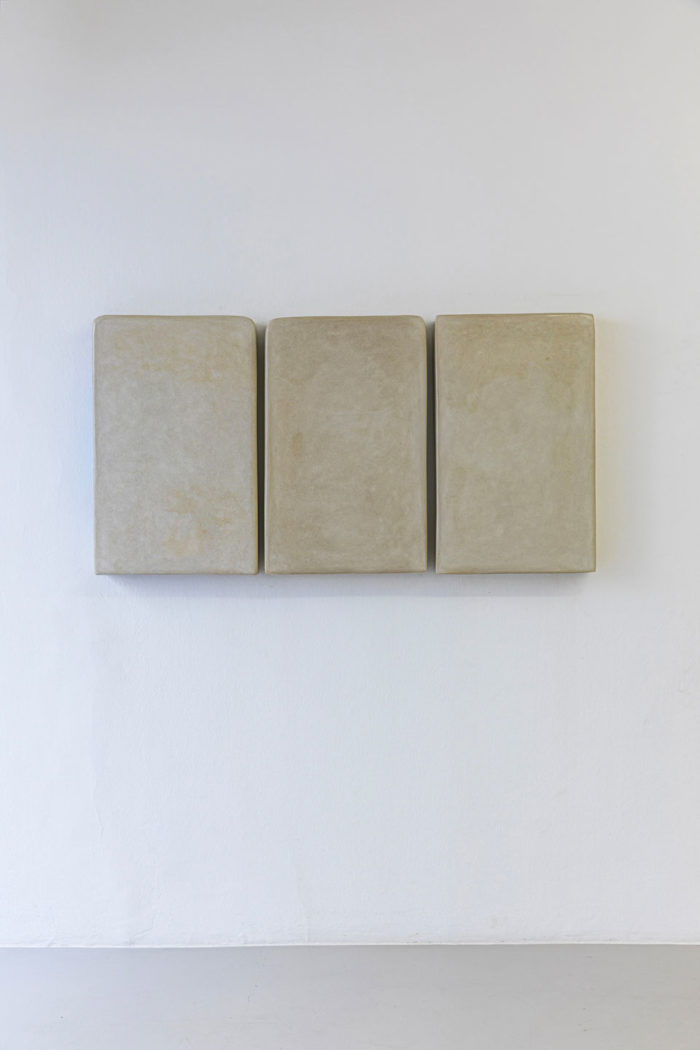
Jumana Manna, CACHE (Insurance Policy), exhibition view, photo Luca Guadagnini ©ar/ge kunst
So the project of rebuilding this gene bank in Lebanon in principle can be a good one. I mean, it’s an important project, but the question is to what use it’s put.
Yes, and, again, how it is managed.
Do you think these gene banks should be open to farmers?
Absolutely. In principle they are. Recently I’ve been helping two farmers in Sardinia, Italy. They wanted to bring millet and sorghum back into cultivation, or at least try. I have been assisting them through asking the gene bank in India, ICRISAT, for samples, and they are sending it. But generally speaking, the CGIAR would rather deal with farmers’ associations, not individual farmers. A Syrian farmer who wrote a letter to the head of ICARDA’s gene bank asking for samples told me that the request went unanswered. So in theory, yes, it should be open to everybody. Of course, farmers have to realize that they’re to comply with rules and regulations, signing the agreement, making sure that they will not give the seed to anybody else, that the seed has to be used for research, and so on.
So I can go to ICARDA’s gene bank and make a request for seeds and, in principle, I can get it?
In principle, yes.
Then what? After I’ve planted it, I need to return the same amount back?
No, once the seed is yours, it is yours.
But the gene bank does not have endless amounts of seed.
What they do is give you a very tiny amount of seed, no more than five to ten grams. They will not give you all the seed that they have.
Then it is up to me to multiply it.
In fact, what would happened if several people asked for the same sample is that they may not have enough seed to supply everybody. They are never left without any seed.
And they should not be.
They should not.
Are you familiar with the 15th Garden initiative?
Not really.
It’s a network of mainly Syrian and European activists that supports urban gardens and agricultural projects in and outside Syria, especially in areas that have been besieged by the regime. They have been smuggling in seeds to these areas, as well as doing organic farming workshops in Lebanon and Turkey. Their aim is to strengthen an independent food production movement and create a foundation for postwar food sovereignty, free from the regime and agrochemical multinationals. I have spoken to a few people from the 15th Garden, and they are quite discreet, but they appreciate your work very much. I’m curious to hear your thoughts on this method of farming as a potential solution for making farmers more independent.
I am not sure if they actually contacted me, or if I heard about this network through one of your emails, but I am now trying to do this type of breeding called evolutionary plant breeding. While conserving varieties, we also mix them, and by mixing this population, it evolves, and thereby you automatically have an adaptation to climate changes, an adaptation to a multitude of different environments. In theory, a farmer will have their own variety perfectly adapted to their environment. They would become the owner of the seed, and if desired can use their population to make selections for a given type of market, for a given type of product. So you can have a mix of subsistence and market-oriented seeds, giving the farmers incredible flexibility. This form of agriculture in which the farmer basically becomes completely independent is exactly what I’m doing at the moment.
Is it done with organic means, or are you using fertilizer and pesticides?
It is mostly organic farmers. Organic agriculture is different from conventional agriculture not simply because in one case you are using synthetic chemicals and in the other you are not. The major difference is diversity. Every single organic farm is different from any other. The moment you stop adding inputs such as pesticides and fertilizers, you basically maximize the differences between this field and the others. So while organic farming follows some general principles, in practice it gives different results depending on soil depth, soil fertility, presence of pathogens, and so every single organic farm needs its own seed. Therefore, I’m promoting that most, if not all, farmers who use evolutionary breeding are organic farmers.
So they make their own compost, breed earthworms . . .
Mostly they use their own seed.
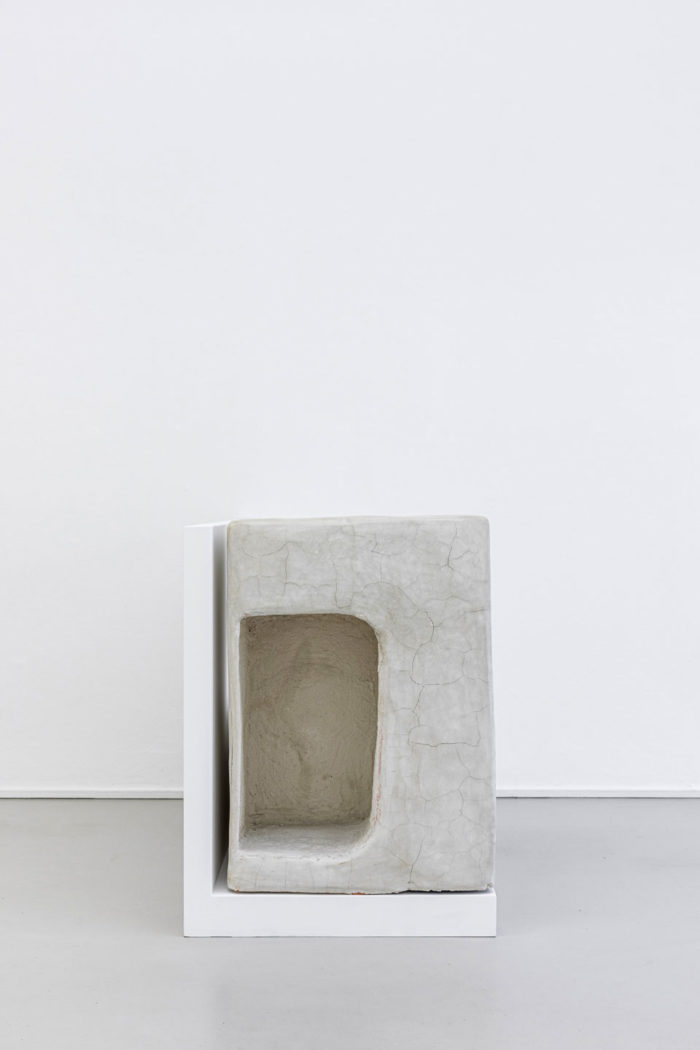
Jumana Manna, CACHE (Insurance Policy), exhibition view, photo Luca Guadagnini ©ar/ge kunst
I have one question I wanted to ask much earlier. I suppose you are familiar with the book by Hanna Batatu, Syria’s Peasantry, the Descendants of Its Lesser Rural Notables, and Their Politics? At one point, Batatu mentions that there was an increased yield in Syria in the 1970s due to the joint efforts of the Ministry of Agriculture and ICARDA. I wonder if, today, countries in the region continue to benefit from this system. One report I read mentioned that the country that benefits most from ICARDA’s research is Australia.
Yes, because most of the legume production in Australia is based on material that was taken from ICARDA.
And doesn’t this kind of remind you of botanical gardens of the sixteenth and seventeenth centuries that shipped seeds from the Global South to the European centers for economic benefit?
Yes, exactly [laughs]. In Syria, I believe that most of the agricultural production, particularly wheat production, increased in the 1970s due to the new irrigation schemes from the Euphrates river, and not necessarily the release of modern seed varieties.
And yet, haven’t the catastrophic effects of the droughts of the last decade been due precisely to the misuse of water resources in Syria?
Yes, exactly. We go back to repeating the mistakes of the Green Revolution.


